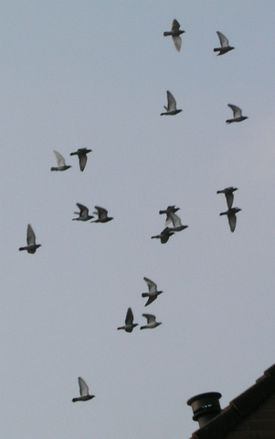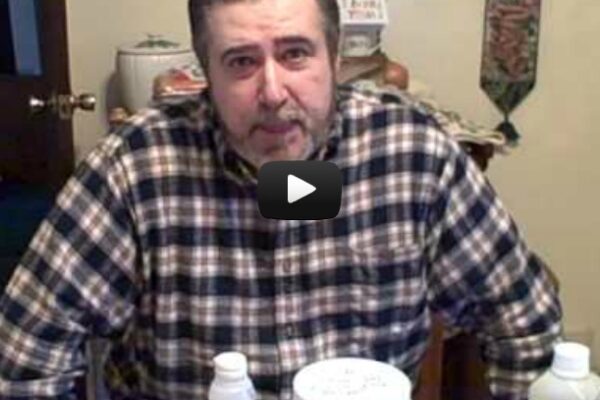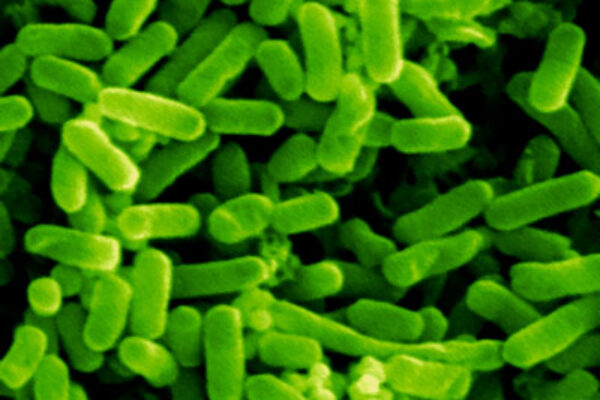Respiratory Disease Checklist
 The Common Signs of Respiratory Disease in Racing Pigeons are:
The Common Signs of Respiratory Disease in Racing Pigeons are:
- Panting after flying.
- Sneezing
- Loft flying decreases
- Race losses
- Eye and nostril discharge
- Swollen cere and sinus
- Stretching of neck and swallowing
- Yawning
The top race performance requires perfect health and fitness.
Performance relates directly to the efficiency of the respiratory and circulation systems to provide the dramatic increase in energy requirements for flight. For example, during normal loft flying the pigeon increases its oxygen consumption fifteen fold and when flying into a head wind the oxygen consumption increases by up to 30 times. These massive energy burdens can only be supported by good health and fitness.
A Check List For Respiratory Disease
Examine the nostril
Any discharge appearing at the nostril (be it watery, tacky or snotty) when applying sideways pressure to the wattle reflects a health problem of the nasal cavity.
Check inside the mouth
The nasal cavity connects with the mouth in an area we refer to as the choanal slit. Many fanciers look at this area during the racing season. A narrowing of the “slit” when there is infection of the nasal cavity accurately reflects the inflammation present throughout the upper airways. Obviously, inflammation in this area will affect the heat and water conservation functions of the nasal cavity and lower competitive performance. The converse is also true and I agree with the fanciers, who believe that a fully open “slit” is a sign of a bird in top form.
Panting after exercise
When a respiratory infection inflames the nasal cavity and upper airways the pigeon is less able to control the considerable heat production generated during flight. With certain respiratory infections the first sign noticed is panting after or during exercise. Panting is a mechanism which sheds excess heat rapidly. A fluttering motion in the neck (a form of panting) may also be seen in the overheated pigeon (this is called gular fluttering). Unfortunately both water and heat are lost with panting.
I often see panting when training birds land after a short toss. These birds are healthy but not yet in top condition or are in the moult and have short flights. Because panting is a mechanism to alleviate overheating, we see it in exercising birds on hot days. When panting is noticed within the loft on very hot days efforts to cool the loft must be taken. Special attention to temperature control within the transporters is essential for the health of the race birds.
We also see panting in unfit birds exercising early in the morning, late evenings or tightly around the loft. It is important for the fancier to differentiate between panting in the healthy pigeon and that caused by respiratory infections.
Respiratory disease involving both the lungs and airsac systems seriously impairs flying performance not only because of the failure of the oxygen delivery system but because the energy systems (liver, muscle etc) are also affected. Disease of the airsac system alone reduces performance because both the delivery of oxygen and the removal of waste products are impaired. The resultant cramping muscles make it impossible for the pigeon to fly.
Also see Panting in Racing Pigeons
Respiratory Disease Checklist by Dr. Rob Marshall
The Leading Online Pigeon Racing and Racing Pigeons Magazine – The Pigeon Insider









I am not making a comment but asking on a condition. Bird boxed the night before and let go approx. 08h00 the weather conditions slight rain but not too bad the bird was the last to arrive home. this bird flew last year and once this year , this training flight was approx. 30 Km when inspected the night one could heart the gasping for air and the beak opened when gasping,opening the beak showed the split fairly closed and the throat very open. what could be the problem and what can I do to rectify. all the other birds that were on this training flight are ok
Hi Chris,
Thanks for posting this great article. I had that same respiratory problems with my birds years ago. I used to think perhaps it was the time of day when I used to exercise the birds around the loft. Midday in the tropics. (Usually they would get 15 to 20 minutes of vigorous exercise, but some of the birds would only make 3 minutes and land, panting heavy). Somewhere I have read that a fancier used peppermint oil to the corn. About a teaspoon to 1 kilo (2 lbs) of corn.